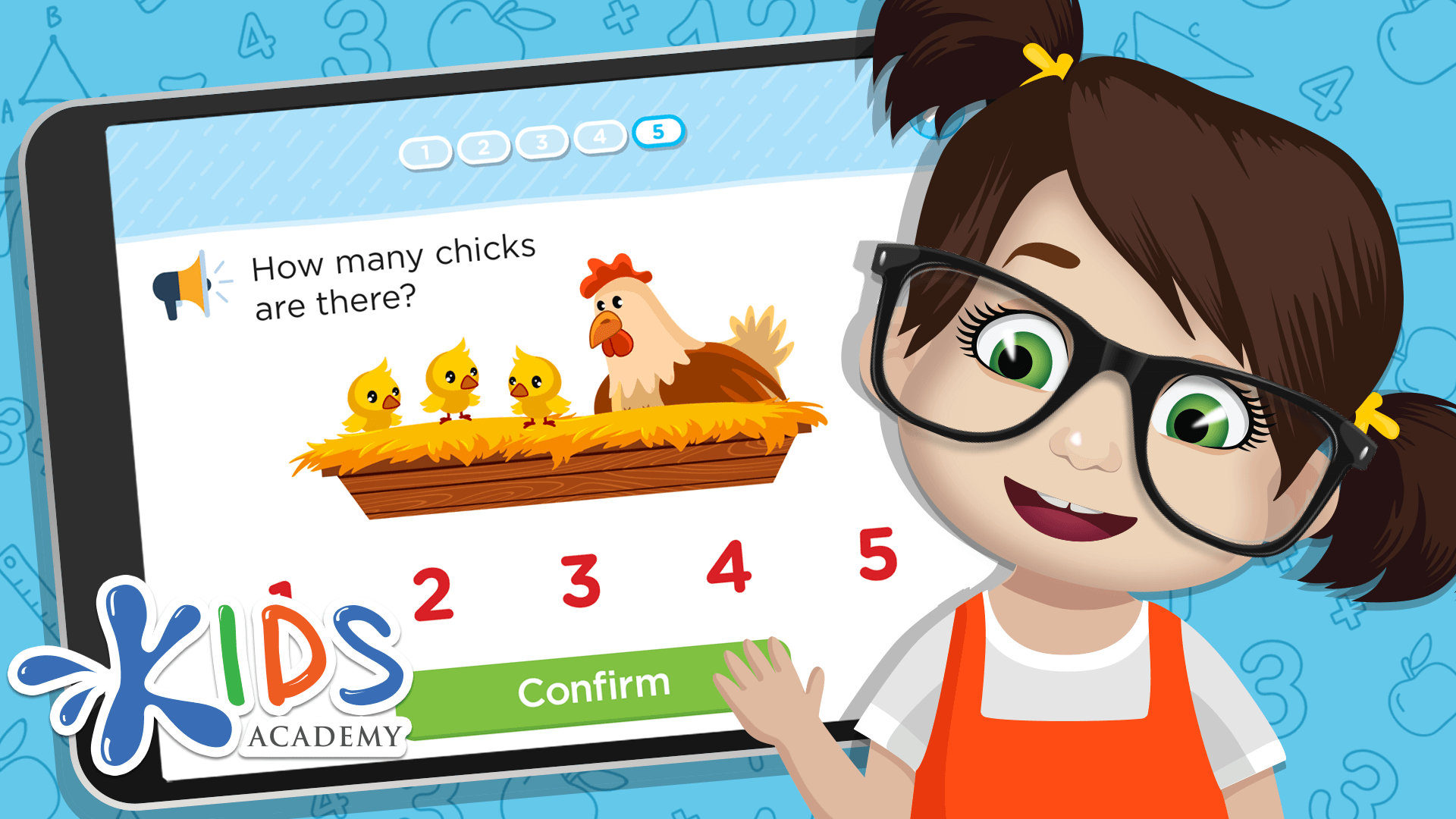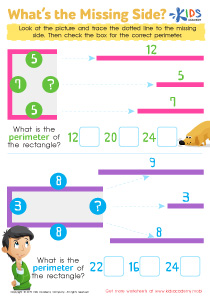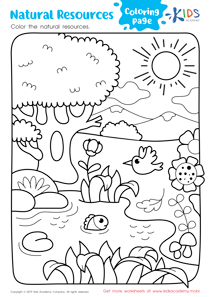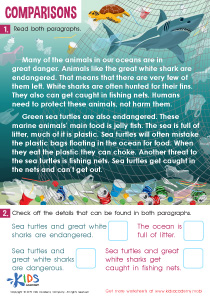Fun 2D Shapes Normal Difficulty Worksheets for Grade 3
1 filtered results
-
From - To
2D Shapes Worksheet Grade 3
Introduce your third-graders to the basics of geometry with our Normal Difficulty 2D Shapes Worksheets. These engaging activities will help them learn about 2D shapes and their properties in a fun, interactive way. Our worksheets include exercises that cover the names of different 2D shapes, their characteristics, and how to differentiate between them. Students will be challenged with drawing and identifying different shapes, as well as solving problems that involve simple operations with shapes. These Normal Difficulty 2D Shapes Worksheets are perfect for building a solid foundation in geometry, and for setting the stage for more advanced concepts in the future. Get your students started today!
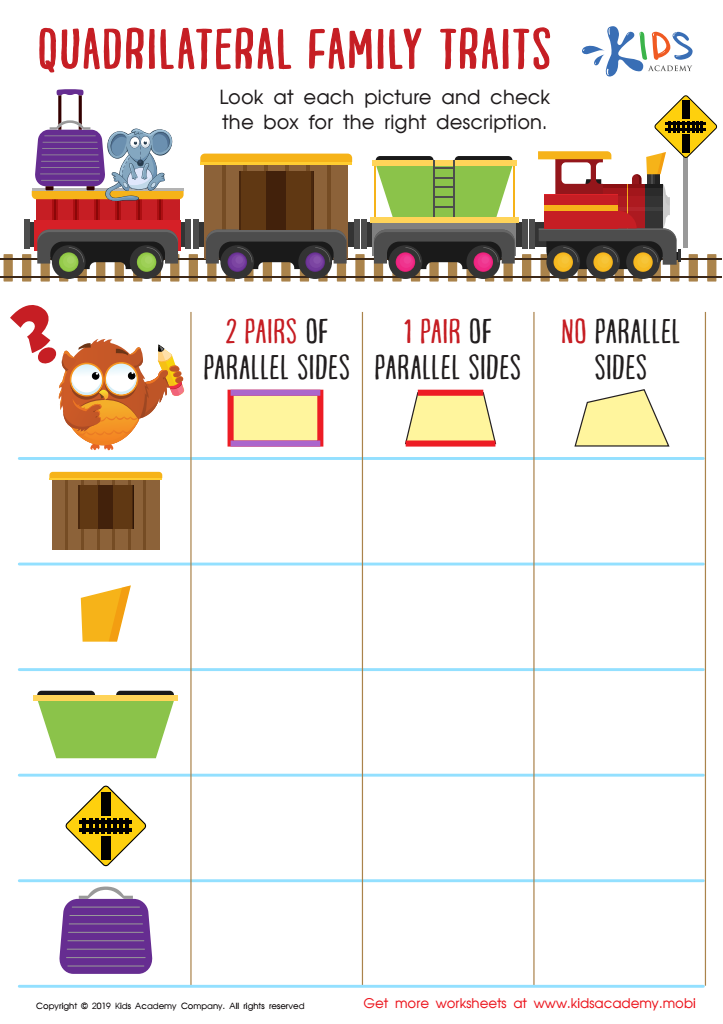

Quadrilateral Family Traits Worksheet
The Importance of 2D Shapes Worksheets for Grade 3 Students
2D Shapes Worksheets for Grade 3: Why They Are Useful
2D shapes form the foundation for geometry. Without a solid understanding of 2D shapes, students will struggle in higher math courses. That is why 2D shapes worksheets are an essential tool for educators, especially those who teach Grade 3 students.
The use of 2D shapes worksheets in Grade 3 classrooms is essential because it helps students develop critical thinking and problem-solving skills. By understanding the properties of 2D shapes, students can learn how to classify them and identify their various attributes, like sides and angles. They can also learn how to compare and contrast different shapes and determine how they can use them to solve mathematical problems.
These worksheets also help build spatial reasoning skills. By understanding the properties of 2D shapes, students develop the ability to visualize objects in their mind and reason spatially. This ability becomes more and more important as students advance into higher-level math courses.
Another benefit of using 2D shapes worksheets in Grade 3 is that they are an effective way to teach students how to use and understand geometry vocabulary. By using the correct terms to describe different shapes and attributes, students will improve their communication and problem-solving skills.
For example, when students learn about rectangles, they can use the terms length and width to describe the shape's properties. When studying triangles, they can learn to use terms like base, height, and hypotenuse to describe the shapes. These terms help students to identify each shape's unique characteristics.
Moreover, 2D shapes worksheets are highly customizable. Teachers can create different versions of these worksheets to cater to their students' unique needs. For example, if a student is struggling to identify shapes by their names, the teacher can create a worksheet that includes visual aids or different naming conventions. This level of customization is one of the reasons why these worksheets are so useful in the classroom.
Lastly, 2D shapes worksheets can help develop critical thinking and problem-solving skills. By presenting students with different 2D shapes and asking them to solve problems using these shapes, teachers can encourage students to think outside the box. They can learn how to apply their knowledge of 2D shapes in various contexts and develop the skills to solve more complex math problems.
In conclusion, 2D shapes worksheets are highly beneficial in Grade 3 classrooms. They help students develop critical thinking and problem-solving skills, build spatial reasoning skills, enhance communication, and improve the understanding of geometry vocabulary.

 Assign to the classroom
Assign to the classroom
